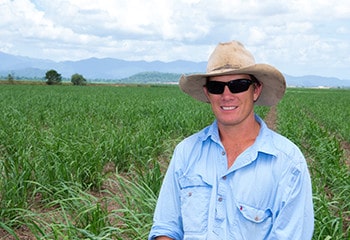Reduced Nitrogen on late cut Final Ratoon Block
Chris became involved with Project Catalyst after discussions about the Game Changer program. He expects that profitability can be improved whilst reducing impact on the environment, all without reducing crop yield.
“These kinds of trials are so important because they’re often the only way to get into new technology and practices. If you’re not innovating, you’re going backwards.”
Trial crop: sugarcane
Crop type: fallow
Trial block size: 102.52 ha
Soil type: lugger soil series
Number of replicates: 3
Potential water quality benefit
A final ratoon sugarcane crop has a yield potential of between 70 and 80 t/ha, and can be harvested late in the season. Chris was aware he may not need to apply the same amount of nitrogen to this crop, as he would to a higher yielding ratoon crop.
If nitrogen inputs and nitrogen requirements were better matched it would mean less nitrogen being lost to the environment.
Challenges
Chris says that one possible disadvantage to this practice change is if there was uncertainty about a block’s final ratoon status.
If a block was originally designated as a final ratoon, and lower nitrogen rates were used, he wondered would there be a yield penalty in the next ratoon crop if it was not fallowed as originally planned?
Trial status and results
In the 2014/2015 season, results from three trial practice treatments showed there was no difference between the three treatments.
This indicated that in this situation, a final ratoon crop yielding between 70 and 75 tonnes of cane per ha would not suffer any yield loss if 75 – 100 kg/ha of nitrogen was applied instead of the farm standard of 150 kg/ha.
Again, 2015/2016 results showed that there was no significant difference in cane or sugar yield, or CCS when the nitrogen application rate was reduced from 143 kg/ha to 95.6 kg/ha.
Five trials over two years in Tully and Ingham have shown that there was no loss with reduced nutrients on final ratoons.
Chris says he is confident using this practice on all future last ratoon blocks.



